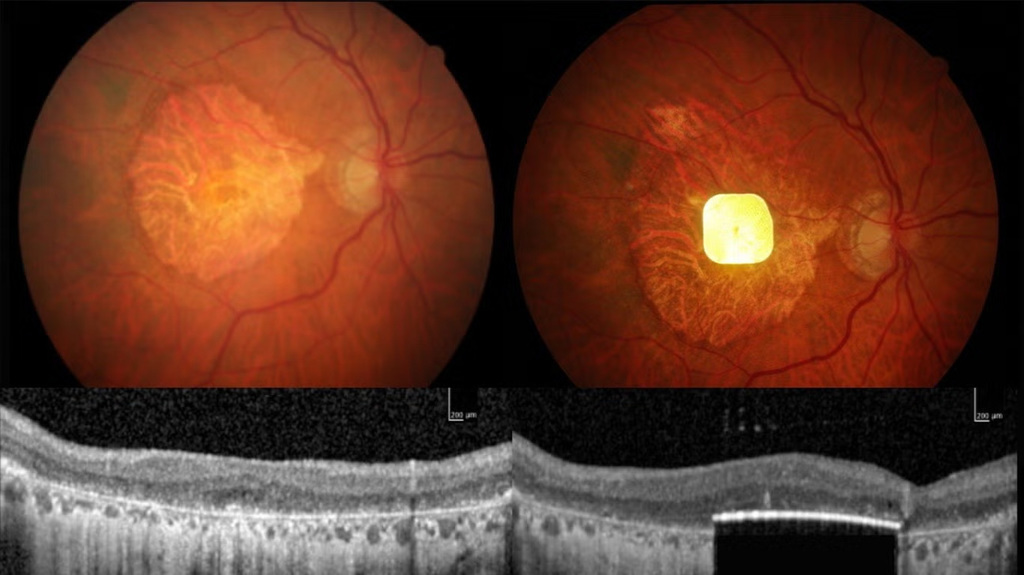
A tiny wireless chip restored vision in people with advanced AMD |
Geographic atrophy affects 8 million people worldwide with a form of age-related macular degeneration that permanently destroys central vision. There is no cure and, until now, these patients relied on magnifiers and special eyeglasses just to navigate daily life. This week, we learned how the a new retinal implant system may significantly improve their prospects.
The PRIMA implant is positioned in the subretinal space at the back of the eye, paired with special glasses that project near-infrared images onto the chip. The implant is powered by light that penetrates to the back of the eyeball, eliminating the need for batteries or wires.
Of the 32 participants who completed the 12-month trial across five European countries, 26 experienced clinically meaningful vision improvement. Participants gained an average of five lines on standard eye charts, with one patient improving by 12 lines, and 27 participants regained their ability to read at home.
“More than 80% of the patients were able to read letters and words, and some of them are reading pages in a book,” explained Dr. José-Alain Sahel, Distinguished Professor and Chairman of Ophthalmology at the University of Pittsburgh, who co-led the study published in the New England Journal of Medicine.
However, the procedure carries risks, with 81% of participants experiencing serious adverse events, though 95% of those resolved within two months.
To learn more about the surgical procedure, cost considerations, and what improvements future versions might bring, jump to “New retinal implant may restore central vision in people with advanced AMD.”
Also making headlines this week:
| |

